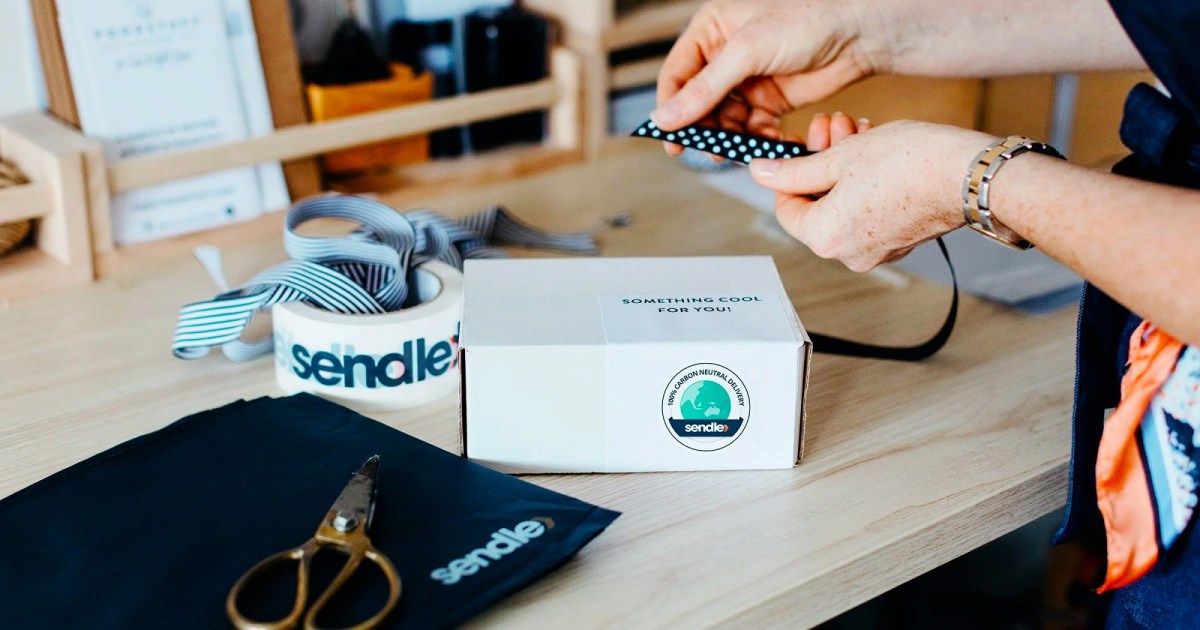eCommerce is a double-edged sword. With every flexible and quick online purchase comes an increased number of fuel-powered delivery trucks on the road and excess packaging waste ending up in landfill.
Our online shopping obsession shows no signs of slowing down. In fact, the World Economic Forum estimates we’ll see 36 per cent more delivery vehicles driving around city streets by 2030. To add to this problem, it’s estimated globally that two garbage trucks of plastic are dumped into the ocean every minute.
For small eCommerce and retail businesses confronted with this new reality, the challenge of reducing our environmental impact while catering to consumers’ expectations can feel insurmountable. Many retailers may feel that taking steps to become more sustainable requires significant resources or cost investment to the business, at a time when high inflation is hitting their businesses and causing prices to skyrocket.
However, it’s quite the opposite. There are many steps small retailers can take now to make their small businesses more sustainable, while reducing their costs and attracting more eco-conscious customers. Here are some ways retailers can supercharge their sustainable journey beyond Plastic Free July.
From little things, big things grow
Despite the best intentions, small businesses and retailers often struggle to start their sustainability journey due to real or perceived barriers. A 2022 study by takepayments on small business challenges found that the biggest barriers for small businesses to become more environmentally sustainable were lack of funding (37%), cost to implement (34%), customer demand 32%) and lack of technology (30%).
However, every lasting change starts with one small step. For retailers, this could be doing an audit of their energy-intensive business processes and services and finding ways to reduce them. For example, reducing energy consumption by switching to renewable providers, minimising waste by using recycled materials and packaging and even reducing meeting costs by doing virtual calls, instead of travelling to and from clients.
To assess your overall carbon footprint, free online calculators are a great place to start if you’re running a small business. Calculating your carbon footprint will reveal the biggest contributors in your operations, and help you take immediate and practical steps to reduce and offset your individual carbon emissions.
Combating plastic packaging waste
Plastic packaging waste is a huge challenge for all retailers. To reduce the amount of plastic ending up in landfill, retailers should consider using compostable or recycled cardboard mailers. There are also alternatives to styrofoam peanuts and bubble wrap, like corrugated cardboard and biodegradable packaging peanuts. While there may be an initial cost upfront, new research from Mastercard suggests that Aussies are willing to pay more for sustainable products and services to help businesses reduce their footprint.
Another way to reduce waste, which may seem simple but is often forgotten, is to ensure you’re investing in the right size parcels. How many times have you opened a package for a tube of lipstick or other small item and it’s been in an unnecessarily big and wasteful box? Using the right size packaging can help to cut down on waste and save your customers from having to deal with big packages, while also fitting more packages in the delivery truck, helping to maximise the available space and reduce emissions from trips taken.
Using the right packaging was one strategy adopted by small jewellery business, Barefoot and Blonde The business struggled to find the right size parcel for their precious rings, necklaces and bracelets and often resorted to sending big packages for lack of a better option. But by shopping around and finding Sendle’s unique 250g parcel, they were able to cut down on waste and spend less on shipping costs — a win-win!
Better together – finding the right partner
Forming the right partnerships is critical to speeding up your sustainable progress and meeting your goals. Retailers should look at opportunities to partner across the value chain, with companies that create more sustainable materials and processes, or are using technology to drive industry change at scale.
Finding the right partner with sustainability credentials on the internet can be overwhelming. Luckily, reputable third-party verified networks like B Corp are a great place to start. To become a B Corp, companies must demonstrate high social and environmental performance by achieving a B Impact Assessment score of 80 or above and passing its risk review and baseline requirements. This allows retailers to search for suppliers and ensure they are meeting the highest standards of transparency and compliance.
On the other end of the supply chain, using a 100% carbon neutral delivery provider like Sendle can help you reduce your carbon footprint across the entire supply chain. Sendle maintains carbon neutrality by using technology to identify and utilise available space in existing delivery networks. It also invests in carbon offsetting projects via its partner SouthPole, aimed at preserving and regenerating natural ecosystems.
Climate action is everyone’s responsibility. While it might seem daunting, the reality is that small steps can make a huge difference, such as managing your energy consumption, reducing your plastic packaging and partnering with verified sustainable suppliers and businesses. The only thing you need to do is start.
James Chin Moody is co-founder and CEO of Sendle.

